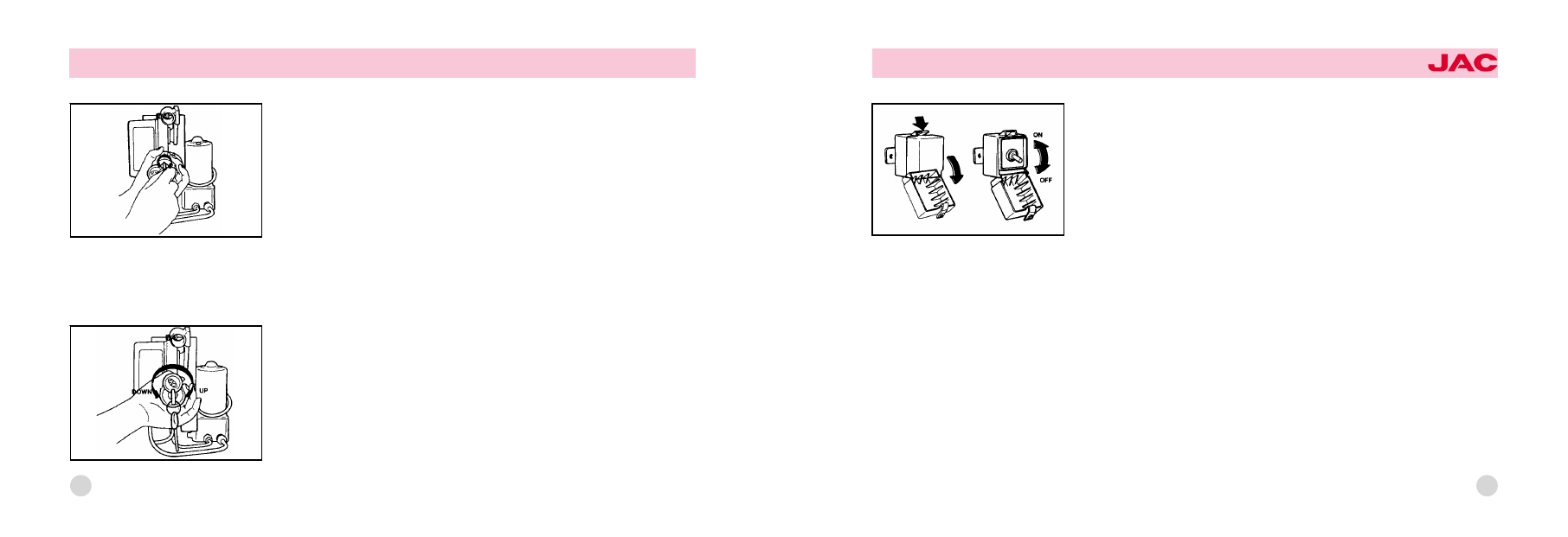JAC Dumper truck. Instruction - part 4

99
2. Turn the direction knob toward the front of the car.
3. Open the switch cover and flick the switch upwards. The cab will automati鄄
cally be raised the held in position by the cab stay. The warning buzzer will
sound at the same time.
4. Flick the switch down, to stop the warning buzzer.
To lower the cab
1. In the unlocking state of the knob, turn the direction knob toward the rear of
the car.
2. Open the switch cover and flick the switch upwards. The cab will automati鄄
cally be tilted the held in position by the cab stay. The warning buzzer will
sound at the same time.
3. Flick the switch down, to stop the warning buzzer.
4. After tilting operation is over, make sure lock the electric tilting cab key and
remove it.
98
Electric tilting cab (If installed)
To raise the cab
1. Unlock the knob by turning the electric tilting cab key
OWNER爷S MANUAL
JAC HEAVY DUTY TRUCK